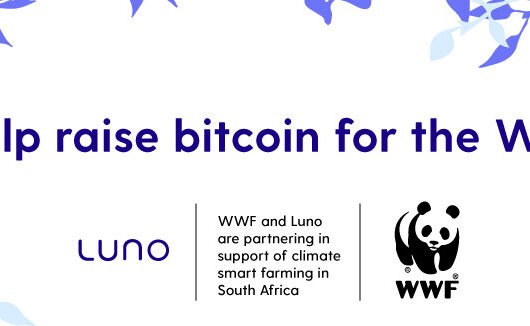Why the technology behind crypto is so important

The benefits of cryptocurrency are many and profound. Over the course of the Pennydrop initiative, we’ve heard people from all walks of life discuss the myriad ways it will impact the world we live in. We’ve heard how it’s going to solve problems across the current financial system that nothing else could – everything from the truly significant, such as banking the unbanked, to the seemingly trivial, such as providing a more efficient way to buy a car.
However, while the applications of cryptocurrency are undeniably important, cryptocurrency is not just a financial instrument. There are two sides to every coin (geddit?). The functionality and benefits it offers are only possible because of the strength of the technology that underpins it, because it works. And we encountered many people for whom excitement about the technology was what brought them to the conclusion that crypto is the future.
Money for the digital age
Cryptocurrency is money for the digital age. It leverages technology in such a way that it’s able to integrate seamlessly into the digital ecosystem. It’s native to the internet, which allows it to work in conjunction with other technologies. A square peg in a square hole. Not money as we know it today – a round peg in a square hole, developed and built for a different age and ill-equipped to exploit the potential of the internet, connected devices and AI.
Bitcoin creator Satoshi Nakamoto was not the first to come up with the idea of digital cash. He/she/it was the first to come up with a solution to the double-spend problem that proved such an obstacle to those who came before him/her/them. The technology that underpins Bitcoin, and the majority of other major cryptocurrencies, is known as the blockchain. For many out there, it was the creation of the blockchain rather than Bitcoin itself that was Satoshi Nakamoto’s real discovery.
Lorien Gamaroff, CEO and co-founder of Centbee, explained to us that crypto is simply a mechanism for sending “digital assets from one owner to another without there having to be a duplicate.”
He gives the example of an MP3 or a digital photo. “It’s very easy to make a copy of that digital photo or MP3 and send it to multiple friends.” Blockchain solves this – and theoretically it’s not just applicable to Bitcoin, it could work for any digital asset.
How it works
The blockchain is essentially just a new way of storing data. It’s a distributed ledger which stores all the Bitcoin transactions ever made across a vast network of nodes and miners. This means there is no single point of failure. This ledger is completely open and transparent, visible to anyone who chooses to find it on a block explorer (it’s pseudonymous, so no identities are relayed here). It relies on a consensus mechanism, which means that each transaction has to be validated by the majority of nodes.
Where fiat currencies are issued by central banks, new Bitcoins are “issued” to miners via a block reward for solving a block, which is then added to the blockchain. Bitcoin’s consensus algorithm is called proof of work. In proof of work, miners compete to add the next block in the chain by using special hardware to solve a complex computational problem, which produces a hash – a seemingly-random 64 character output.
Proof of work ensures that the next block in a blockchain is the one and only version of the truth, and it keeps powerful adversaries from derailing the system and successfully forking the chain.
Riccardo Spagni is a world-renowned developer and the former lead at Monero. He explained to us that it was the security properties of cryptocurrency that first brought him to the space, although he started as so many before him have – heavily sceptical.
“A lot of software developers claim that ‘oh this is secure,’ ‘this is robust,’” says Ricardo. “And I always go, ‘Oh, no it isn’t. Let me see if I can figure out how to break it.’”
Ricardo spent a lot of time initially trying to break Bitcoin’s consensus mechanism. “That was really difficult,” he says. “And when I realised I couldn’t do it, that it wasn’t feasible, that I had really come to an understanding of how Bitcoin’s consensus mechanism works. That was my Pennydrop moment. That was when I realised this is a thing that could last decades. This is a thing that could really shift power. That could change the dynamic in a lot of ways.”
A secure asset
Bitcoin’s security is the reason it works. The crypto in cryptocurrency stands for cryptography – an ancient science that protects information from nefarious parties who would use it in ways not intended by the originator. Many, like Ricardo, have tried to crack Bitcoin, but it has still never been hacked.
There is a common misconception that blockchain technology is too complicated to understand. It is this complexity that dissuades many from entering the space, fearful that they simply will not get it. But how much do you know about your bank’s security systems? Do you know who has access to your funds? Who could go in and steal it?
For the end-user, the technology that underpins it might not really matter – who cares when you’re buying a coffee with Bitcoin or sending it overseas to family? As Simon Dingle said to us, “I believe that one day, it’s something that you won’t have to understand. It will just make your life better. Very few people can explain how their smartphone works. It doesn’t matter because the narrative has become about why it’s good for them, what it enables in their lives.”
This may well be true, but as we realise the financial and economic benefits, and as new use cases for blockchain and cryptocurrencies emerge, it will all be possible because the technology is so strong.
Take part
When did it finally sink in for you that cryptocurrency is the future? What excites you about its potential? Was it the shiny new technology? Taking back control of your own money? Was it just plain old human curiosity?
There’s no tale too big, no tale too small. Whether it’s a video, a social post or even a blog article, we’d love to hear from you. You can share your story with us on Twitter, YouTube or Facebook using the #pennydropmoment.
Share your moment today and help inspire a movement.
 Discover
Discover Help Centre
Help Centre Status
Status Company
Company Careers
Careers Press
Press


